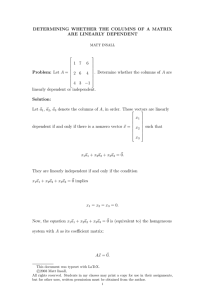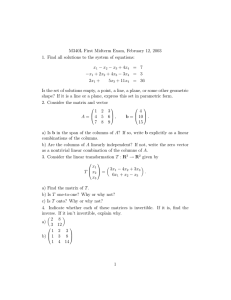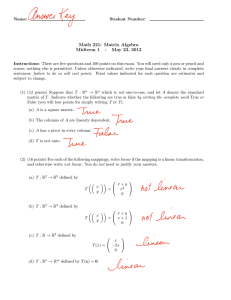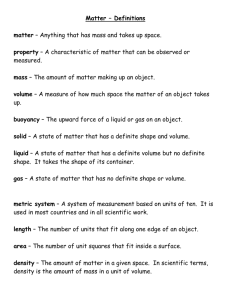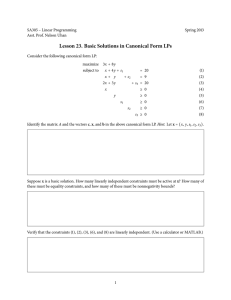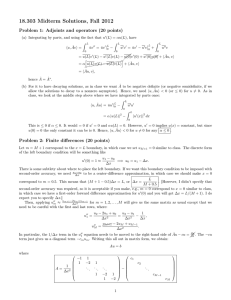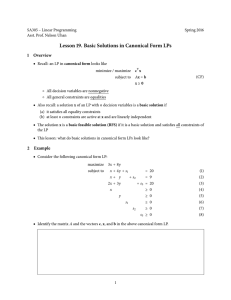Solutions to Problem Set 2 #
advertisement
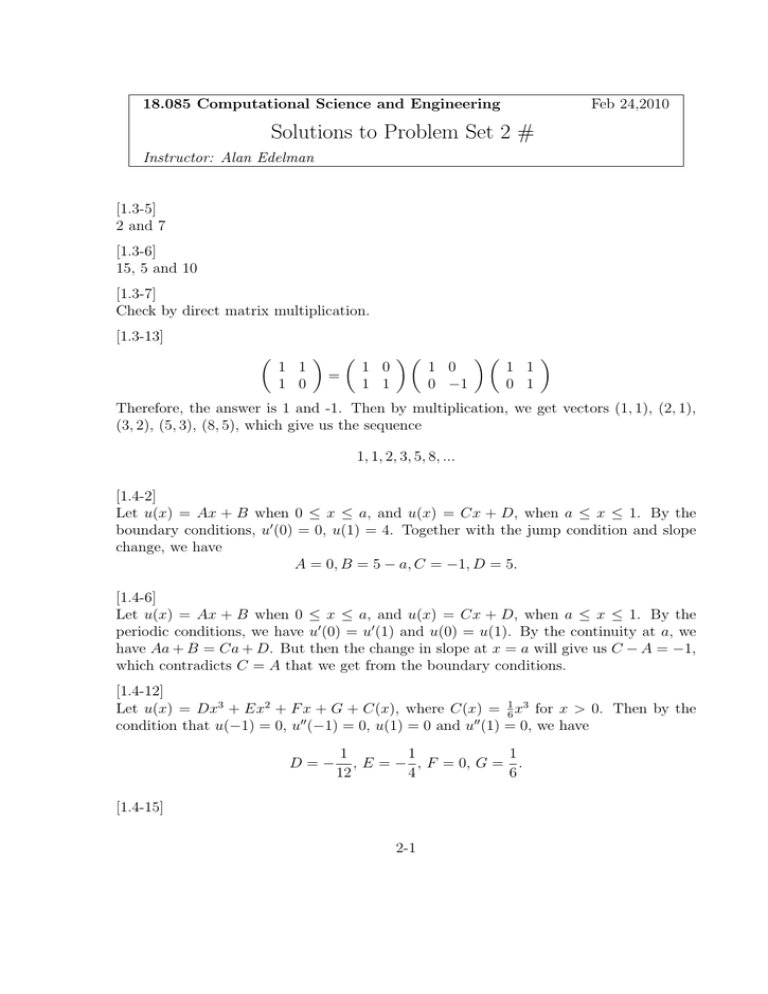
18.085 Computational Science and Engineering Feb 24,2010 Solutions to Problem Set 2 # Instructor: Alan Edelman [1.3-5] 2 and 7 [1.3-6] 15, 5 and 10 [1.3-7] Check by direct matrix multiplication. [1.3-13] 1 1 1 0 = 1 0 1 1 1 0 0 −1 1 1 0 1 Therefore, the answer is 1 and -1. Then by multiplication, we get vectors (1, 1), (2, 1), (3, 2), (5, 3), (8, 5), which give us the sequence 1, 1, 2, 3, 5, 8, ... [1.4-2] Let u(x) = Ax + B when 0 ≤ x ≤ a, and u(x) = Cx + D, when a ≤ x ≤ 1. By the boundary conditions, u0 (0) = 0, u(1) = 4. Together with the jump condition and slope change, we have A = 0, B = 5 − a, C = −1, D = 5. [1.4-6] Let u(x) = Ax + B when 0 ≤ x ≤ a, and u(x) = Cx + D, when a ≤ x ≤ 1. By the periodic conditions, we have u0 (0) = u0 (1) and u(0) = u(1). By the continuity at a, we have Aa + B = Ca + D. But then the change in slope at x = a will give us C − A = −1, which contradicts C = A that we get from the boundary conditions. [1.4-12] Let u(x) = Dx3 + Ex2 + F x + G + C(x), where C(x) = 16 x3 for x > 0. Then by the condition that u(−1) = 0, u00 (−1) = 0, u(1) = 0 and u00 (1) = 0, we have D=− 1 1 1 , E = − , F = 0, G = . 12 4 6 [1.4-15] 2-1 Z +∞ 0 g(x)δ (x)dx = g(x)δ(x)|+∞ −∞ Z +∞ − δ(x)dg(x) −∞ −∞ Z +∞ δ(x)g 0 (x)dx =0− −∞ 0 = −g (0) [1.5-2] λ = 2(1 − cos πh) [1.5-10] 1 2 For A = , we have 0 3 A = SΛS −1 = 1 0 ! 1 1 22 1 1 22 1 0 0 3 1 −1 1 0 22 . Then check that A2 = SΛ2 S −1 is direct by matrix multiplication. 1 1 Similar for A = , we have 2 2 2 1 1 0 0 − 13 −1 3 A = SΛS = . 1 1 −1 2 0 3 3 3 Also, we have A2 = SΛ2 S −1 . [1.5-11] A−1 = (SΛS −1 )−1 = (S −1 )−1 (Λ)−1 S −1 = SΛS −1 . Also for A3 , we have A3 = SΛ3 S −1 . [1.5-12] 1 1 2 0 S= ,Λ= . Then 0 1 0 5 A = SΛS −1 = 2 3 0 5 . [1.6-12] 1 2 For A = , we have AT A positive definite because the columns of A are linearly 0 3 independent. 2-2 1 1 For A = 1 2 , we have AT A positive definite because the columns of A are linearly 2 1 independent. 1 1 2 For A = , we have AT A not positive definite because the columns of A are 1 2 1 linearly dependent. 2-3
